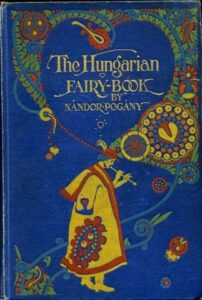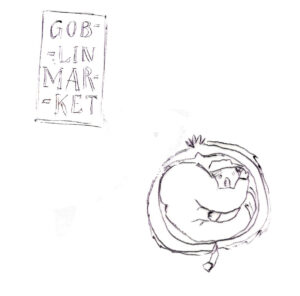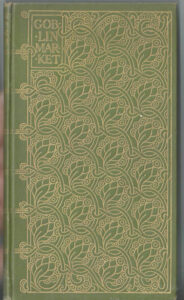This special blog post has been written by our new artist-in-residence, Katie Forrester. Katie is a PhD research student of Illustration at Edinburgh College of Art in Scotland, UK. You can find her blog, ‘Katie’s Illustration’, here.
Scotland’s Early Literature for Children Initiative (SELCIE) is an organisation which aims to rediscover Scotland’s heritage of publishing for children. Founding member, Sarah Dunnigan, kindly invited me to have a look in the Museum of Childhood archives held at the City Chambers, which I have been planning to do for a while and finally got the chance! In the basement, there is a room full of boxes which Sarah and her team have catalogued and another room with older books and chap books dating back to the seventeenth century.
The collection provides a historical context to my research project on cultural diversity in picture books made for children. In the archives, I am looking for clues of what ideologies may be included in children’s literature and how this may have changed over time. One of the books that caught my eye was a binding of Hungarian folk tales, which has a cornflower blue cover printed with yellow, green and red folk-style decorations (there is a picture below). It has a very orientalist (in the pejorative sense) preface written by Leo Sarkadi: “During all these centuries they [Hungarians] were the key to Europe, and as such often a mighty stronghold that held the wild eastern hordes at bay” (Pogany, 1913). At the time of publishing if this book, expanding empires were striving for cultural domination, which may be why Sarkadi describes these nations derogatorily and collectively as ‘eastern hordes’.

Clues to a propaganda against non-western civilisations- such as the Ottoman Empire – were evident in literature as can be deduced from this excerpt. It reveals a glaring example of western hegemony embedded through the subversive power of literature. The characters illustrated by Pogany allude to charming tales told by wholesome and well-meaning storytellers such as the sketch I made below of a Hungarian woman below who is carrying baskets as if after a harvest – a familiar and modest role. However, the preface suggests the agenda of the book may not be as apolitical as it seems, instead it suggests certain cultures are of higher value than others, as well as that a conformist nature is a virtuous trait.

I also found an edition of Goblin Market (1893) by Christina Rossetti and illustrated by Laurence Housman with very intricate and spindly art-deco styled illustrations.The Goblin Market is a poem about two sisters, one of whom is seduced by the fruit of the goblins, and how they manage to overcome their ill-fate with sisterly care. I copied the typography on the front and a little goblin-like creature that seems to be hunched up in the heart of a chestnut:

The illustrations by Housman are very decorative and, like the poem, heavy with symbolism and visual meaning. Christina Rossetti and Laurence Housman were both part of the Pre-Raphaelite movement which reacted against realism by revivifying medieval ideas of chivalry and romance, drawing heavily on archetypal imagery common in folktale and medieval romances (Roe, [online]). Archetypal imagery, or motif, is a subject I am particularly interested in as it tends form links between tales originating in disparate places (Propp, 1990 [1968]). For this reason, I use storytelling motifs to make illustration with the aim to create intercultural picture books. The SELCIE project allows me the opportunity to see how former illustrators have used symbol and engineered it to carry cultural meaning, which allows me in turn to question what ideological issues arise from my own work.

References
Images:
Figure 1: Laurence Housman’s cover design of The Goblin Market by Christina Rossetti (1983) [online] http://www.victorianweb.org/art/design/books/cooke8.html Accessed 17/03/2017
Figure 2: My sketch of a Hungarian woman (possibly harvesting, perhaps the storyteller).
Figure 3: My sketch of Housman’s typography and illustration for The Goblin Market by Rossetti.
Figure 4: Cooke, Simon (2014) Laurence Housman as a book binding [online]
designer http://www.victorianweb.org/art/design/books/cooke8.html
Text:
Pogany, Nandor and illustrated by Willy Pogany (1913) The Hungarian Fairy-Book
London: T. Fisher Unwin
Propp, Vladimir (1990 [1968]) The Morphology of the Folktale USA: University of Texas Press
Roe, Dinah The Pre-Raphaelites [online] https://www.bl.uk/romantics-and-victorians/articles/the-pre-raphaelites Accessed: 17/03/2017
Rossetti, Christina and illustrated by Laurence Housman (1893) Goblin Market London:Macmillan
Said, Edward (2001, [1978]) Orientalism UK: Penguin
http://www.edinburghmuseums.org.uk/Venues/Museum-of-Childhood


